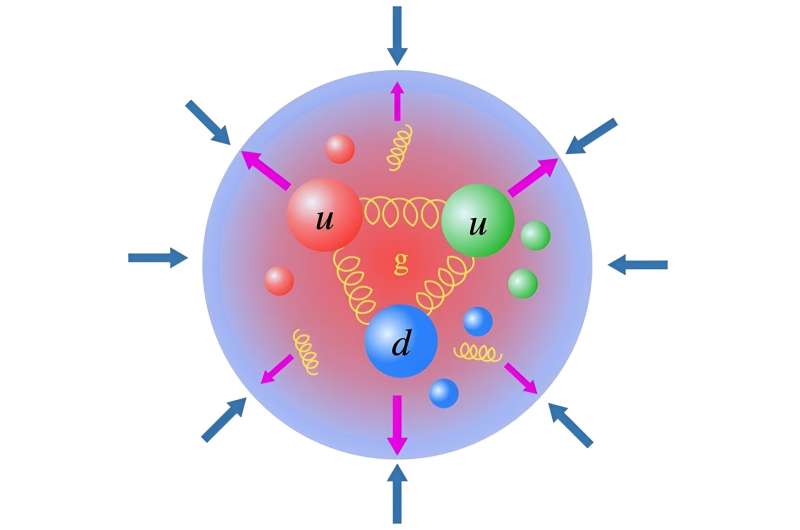This article has been reviewed according to Science X's editorial process and policies. Editors have highlighted the following attributes while ensuring the content's credibility:
fact-checked
peer-reviewed publication
trusted source
proofread
Scientists discover energy and pressure analogies linking hadrons, superconductors and cosmic expansion

Quantum chromodynamics (QCD) is the theoretical framework for studying the forces within atomic nuclei and their constituent protons and neutrons. A major part of QCD research involves how quarks and gluons are contained within nucleons (protons and neutrons).
Mathematically, the forces inside nucleons can be compared to the force of gravity. However, quantum effects known as the "trace anomaly" that do not follow the same pattern can become prominent in nucleons. These quantum effects may be responsible for the balance between the outward pressure inside nucleons and the forces holding them together.
Recent research has shown that the trace anomaly can be measured using the production of charmonium. This is a type of subatomic particle produced at the Thomas Jefferson National Laboratory and the future Electron Ion Collider. Researchers can also theoretically calculate the trace anomaly using QCD. The study is published in the journal Physics Letters B.
Combining experimental measurements and theoretical calculations of the trace anomaly will provide insights into the mass and pressure distributions within hadrons. These are particles that consist of quarks and gluons.
In both hadrons and superconductors, how particles are confined to a specific volume can be described with the same mathematical framework. This is also similar to the role of the cosmological constant or dark energy in regard to energy and pressure in the equations describing the expansion and acceleration of the universe.
Finally, researchers can measure the trace anomaly experimentally and calculate the anomaly in lattice QCD. This offers a direct means of probing and understanding the dynamics of quantum chromodynamics.
These examples illustrate how the concepts of energy, pressure, and confinement manifest across different physical systems, from the microscopic to the cosmic scales, providing a unified understanding of diverse phenomena in physics.
More information: Keh-Fei Liu, Hadrons, superconductor vortices, and cosmological constant, Physics Letters B (2023). DOI: 10.1016/j.physletb.2023.138418
Journal information: Physics Letters B
Provided by US Department of Energy





















